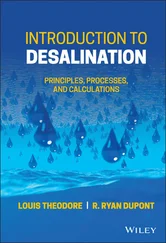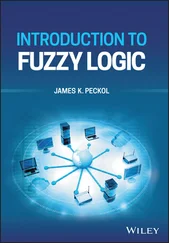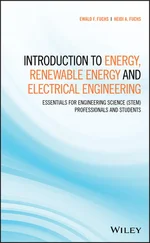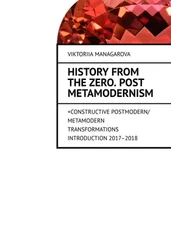3 Chapter 3Figure 3.1 Flashing process on T – v diagram.Figure 3.2 Flashing stage.Figure 3.3 MSF–OT configuration.Figure 3.4 Single flashing stage ( n = 1).Figure 3.5 Single flashing stage ( n = 2).Figure 3.6 Optimum number of stages in MSF desalination system.Figure 3.7 MSF–BR configuration.Figure 3.8 Flashing stage ( n ) with three basic components.Figure 3.9 Flashing pool in stage n .Figure 3.10 Distillate tray in stage n .Figure 3.11 Tube bundle in stage n .Figure 3.12 (a) Flow sheet of MSF–BR system (IPSEpro® software). (b) Schemat...Figure 3.13 Temperature loss profile.Figure 3.14 Distillate and flashing brine flow rate at each stage.Figure 3.15 Flashing brine salinity.Figure 3.16 Effect of top brine temperature on the plant gain output ratio....Figure 3.17 Effect of top brine temperature on the specific thermal energy....Figure 3.18 Effect of top brine temperature on exergy destruction.Figure 3.19 Effect of top brine temperature on exergy destruction.Figure 3.20 MSF–BM desalination plant.
4 Chapter 4Figure 4.1 MEE–TVC ( n = 2) desalination system.Figure 4.2 TVC schematic diagram.Figure 4.3 Distribution of pressure and velocity profiles within TVC system....Figure 4.4 TVC power performance diagram (EnR, σ , ER).Figure 4.5a Optimal gain output ratio at different suction position for equa...Figure 4.5b Configuration of MEE‐MVC desalination system.Figure 4.6 Natural gas production by source, 1990–2040 (trillion cubic feet)...
5 Chapter 5Figure 5.1 Membrane safe operating window.Figure 5.2 Fundamentals of membrane configurations, driving forces, structur...Figure 5.3 Membrane types; MF,UF,NF, and RO.Figure 5.4 Typical spiral wound module design.Figure 5.5 Membrane configurations. (a) Plate and frame. (b) Tubular.Figure 5.6 Natural osmosis and reverse osmosis.Figure 5.7 Brief historic timeline of the development of reverse osmosis mem...Figure 5.8 Membrane flux vs. applied trans‐membrane pressure gradient.Figure 5.9 Typical values of operating range of RO and EDR desalination tech...Figure 5.10 Transport in pore flow and solution‐diffusion membrane models....
6 Chapter 6Figure 6.1 Milestones in the development of ion‐exchange membrane processes....Figure 6.2 (a) Worldwide installed capacity of thermal and membrane system i...Figure 6.3 (a) Theoretical and expected current–voltage curve in electrochem...Figure 6.4 Principle of desalination by electrodialysis in a stack of cation...Figure 6.5 Differential element of dilute compartment.Figure 6.6 Experimentally determined current vs. voltage curve measured with...Figure 6.7 EDR process with negative polarity using cation (C) and anion (A)...
7 Chapter 7Figure 7.1 Effective range of membrane processes and applications under four...Figure 7.2 Transfer of vapor through hydrophobic membrane.Figure 7.3 Timeline for membrane distillation (MD).Figure 7.4 Four common configurations of membrane distillation.Figure 7.5 DCMD desalination system.Figure 7.6 Basic functional phenomena of the membrane distillation process: ...Figure 7.7 Conduction heat and mass transfer through DCMD membrane ( T 1> T 2)...Figure 7.8 Heat transfer resistances analog in MD.Figure 7.9 Mass transfer resistances in MD.Figure 7.10 Types of flows: (a) Knudsen diffusion ( d ≪ L ), (b) steady flow (...Figure 7.11 Surface fouling (external) and pore blocking (internal).
8 Chapter 8Figure 8.1 Direction of permeate flux for RO, PRO, FO, and AFO.Figure 8.2 FO industrial applications.Figure 8.3 FO with other industrial system arrangement.Figure 8.4 Schematic illustration of forward osmosis process with membrane a...Figure 8.5 Osmotic pressure vs. draw solution concentration.Figure 8.6 Schematic of ammonia–carbon dioxide FO desalination system.Figure 8.7 Correlation of water flux, feed recovery, membrane area, and pump...Figure 8.8 FO and RO integration for seawater desalination.Figure 8.9 The effect of feed dilution and enhancing membrane permeability o...Figure 8.10 Flow patterns in a spiral‐wound module for FO, with the feed sol...Figure 8.11 (a) Concentrative internal CP and (b) dilutive internal CP acros...Figure 8.12 Milestones in the development of pervaporation.Figure 8.13 Vacuum pervaporation process.Figure 8.14 The choice of membrane with respect to the size of particles enc...Figure 8.15 Sorption–desorption in pervaporation.Figure 8.16 Comparison between diffusion and natural osmosis process. (a) Di...Figure 8.17 Conceptual diagram of the hemodialysis treatment for chronic kid...Figure 8.18 Membrane blood fluxes.Figure 8.19 Schematic representation of ND with a three‐compartment membrane...
9 Chapter 9Figure 9.1 World energy consumption by fuel type, 1990–2040 (quadrillion Btu...Figure 9.2 Possible technological combinations of three types of renewable e...Figure 9.3 Integrated solar desalination systems.Figure 9.4 Temperature and concentration profiles of solar pond: UCZ, upper ...Figure 9.5 Heat balance for UCZ (surface zone).Figure 9.6 Heat balance for LCZ (strong zone).Figure 9.7 Different configurations of solar stills. (a) Single‐stage solar ...Figure 9.8 Various heat transfer modes in convection single slope solar stil...Figure 9.9 MVC desalination system combined with photovoltaic collectors.Figure 9.10 Wind turbine.Figure 9.11 (a) Airfoil: angle of attack ( α ) lift and drag(b) Airfo...Figure 9.12 Geothermal steam power plant.
10 Chapter 10Figure 10.1 Breakdown of total worldwide installed capacity by technology....Figure 10.2 Process diagram for the SEF‐G system.Figure 10.3 Thermodynamic model of the SEF‐G system.Figure 10.4 Process diagram of the hybrid MEE‐FF–solar system.Figure 10.5 Effect of TBT and numbers of effect on the performance ratio.Figure 10.6 Effect of TBT and numbers of effect on the specific heat transfe...Figure 10.7 Effect of TBT and numbers of effect on the specific cooling wate...Figure 10.8 Design structure option 1 (brine recycling).Figure 10.9 Design structure option 2 (brine recycling – cold brine).Figure 10.10 Design structure option 3 (brine recycling after both MD and RO...Figure 10.11 Design structure option 4 (brine recycling after MD).Figure 10.12 Design structure option 5 (brine recycling after RO).Figure 10.13 Performance of option 1 vs. recycle ratio (for variable and fix...Figure 10.14 Performances of options 3–5 (varying fresh feed makeup).Figure 10.15 Performances of options 3–5 (fixed fresh feed makeup).Figure 10.16 Performance of options 2 and 5 at various pressure values (vary...Figure 10.17 Simplest embodiment of HDH process.Figure 10.18 Classification of HDH systems based on cycle configurations....
1 Cover
2 Table of Contents
3 Begin Reading
1 iv
2 v
3 xiii
4 1
5 2
6 3
7 4
8 5
9 6
10 7
11 8
12 9
13 10
14 11
15 12
16 13
17 14
18 15
19 16
20 17
21 18
22 19
23 20
24 21
25 22
26 23
27 24
28 25
29 26
30 27
31 29
32 30
33 31
34 32
35 33
36 34
37 35
38 36
39 37
40 38
41 39
42 40
43 41
44 42
45 43
46 44
47 45
48 46
49 47
50 48
51 49
52 50
53 51
54 52
55 53
56 54
57 55
58 56
59 57
60 58
61 59
62 60
63 61
64 62
65 63
66 64
67 65
68 66
69 67
70 68
71 69
72 70
73 71
74 72
75 73
76 74
77 75
78 76
79 77
80 78
81 79
82 80
83 81
84 82
85 83
86 84
87 85
88 86
Читать дальше
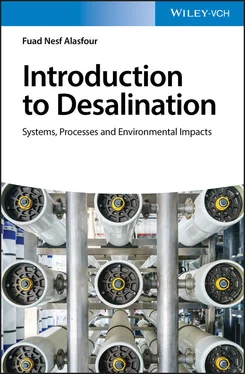



![Andrew Radford - Linguistics An Introduction [Second Edition]](/books/397851/andrew-radford-linguistics-an-introduction-second-thumb.webp)

